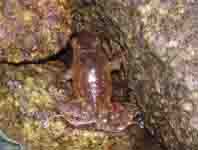Abstract
The Neotropical genus Maietta Alexander (Diptera: Limoniidae), endemic to Southern South America (Chile), is revised. Three new species, M. dextra sp. n., M. edwardsi sp. n. and M. sinistra sp. n., are described and illustrated. An identification key is provided for all species. The phylogenetic relationships of the species are investigated in a cladistic analysis, resulting in one single most parsimonious cladogram with the topology ((M. squamigera + M. dextra sp. n.) (M. edwardsi sp. n. (M. trimedia + M. sinistra sp. n.))).
References
Alexander, C.P. (1929) Diptera of Patagonia and South Chile. Part I. Crane-flies (Tipulidae, Trichoceridae, Tanyderidae). Diptera of Patagonia and South Chile , 1, 1–240.
Alexander, C.P. (1961) New or little-known crane-flies from New Guinea (Diptera: Tipulidae). Part I. Pacific Insects, 3, 485–506.
Alexander, C.P. (1967) Undescribed or little-known tropical American Tipulidae (Diptera). Part II. Studia Entomologica, 9, 465–500.
Alexander, C.P. (1968) New or little-known Tipulidae from Chile and Peru (Diptera: Tipulidae). Revista Chilena de Entomologia, 6, 21–36.
Goloboff, P.A. (1993) Estimating character weights during tree search. Cladistics, 9 (1), 83–91.
https://doi.org/10.1111/j.1096-0031.1993.tb00209.x
Goloboff, P.A. & Santiago, A.C. (2016) TNT version 1.5, including a full implementation of phylogenetic morphometrics. Cladistics, 32 (3), 221–238.
https://doi.org/10.1111/cla.12160
de Jong, H. (2017) Limoniidae and Tipulidae (crane flies). In: Kirk-Spriggs, A.H. & Sinclair, B.J. (Eds.), Manual of Afrotropical Diptera. Vol. 2. Suricata 5. South African National Biodiversity Institute, Pretoria, pp. 427–477.
McAlpine, J.F. (1981) Morphology and terminology – adults. In: McAlpine, J.F. (coordinators), Manual of Nearctic Diptera. Vol. 1. Agriculture Canada, Ottawa, pp. 9–63.
Lukashevich, E.D. & Ribeiro, G.C. (2019). Mesozoic fossils and the phylogeny of Tipulomorpha (Insecta: Diptera). Journal of Systematic Palaeontology, 17 (8), 635–652.
https://doi.org/10.1080/14772019.2018.1448899
Oosterbroek, P. (2019) Catalogue of the Craneflies of the World (Insecta, Diptera, Nematocera, Tipuloidea). Available from: http://ccw.naturalis.nl/ (accessed 1 April 2019)
Özgül, O. & Koç, H. (2014) Four New Species of Limoniidae (Diptera, Nematocera) from the Inner-West Anatolian Subregion of Turkey. Florida entomologist, 97 (2), 620–625.
https://doi.org/10.1653/024.097.0238
Ribeiro, G.C. (2006) Homology of the gonostylus parts in crane flies, with emphasis on the families Tipulidae and Limoniidae (Diptera, Tipulomorpha). Zootaxa, 1110 (1), 47–57.
https://doi.org/10.11646/zootaxa.1110.1.5
Ribeiro, G.C. (2008) Phylogeny of the Limnophilinae (Limoniidae) and early evolution of the Tipulomorpha (Diptera). Invertebrate systematics, 22 (6), 627–694.
https://doi.org/10.1071/IS08017
Ribeiro, G.C. & Eterovic, A. (2011) Neat and clear: 700 species of crane flies (Diptera: Tipulomorpha) link southern South America and Australasia. Systematic Entomology, 36, 754–767.
https://doi.org/10.1111/j.1365-3113.2011.00594.x
Santos, D., Ribeiro, G.C., Cabral, A.D. & Sperança, M.A. (2018) A non-destructive enzymatic method to extract DNA from arthropod specimens: Implications for morphological and molecular studies. PLoS ONE, 13 (2), e0192200.

